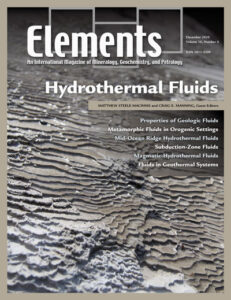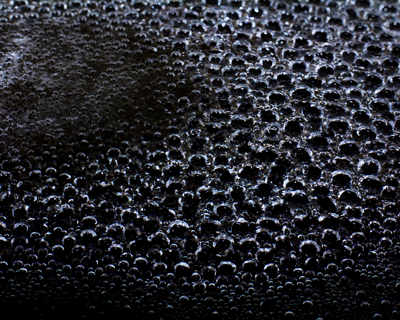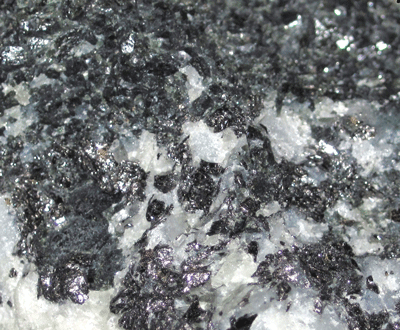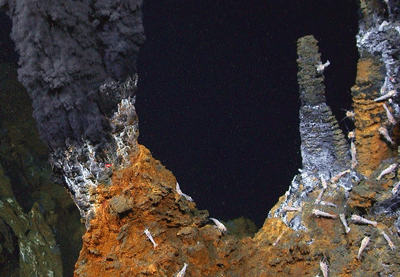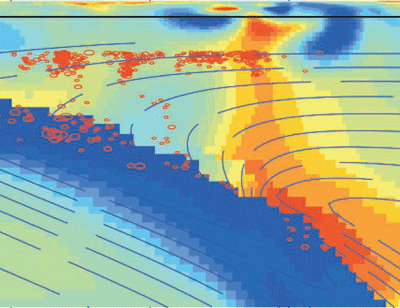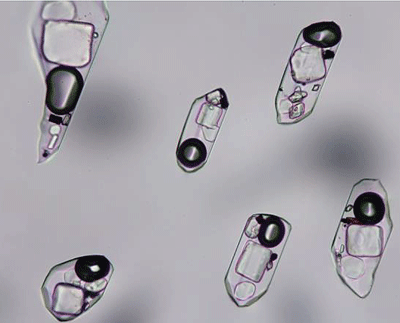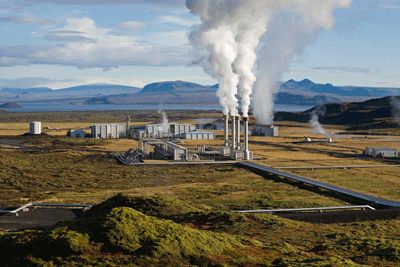Hydrothermal Fluids
Matthew Steele-MacInnis and Craig E. Manning – Guest Editors
Table of Contents
Fluids are the principle agents of heat and mass transfer in the Earth. This thematic issue will explore the physical and chemical properties of hydrothermal fluids and how they affect geologic processes. The issue will discuss our current understanding of the nature of hydrothermal fluids across a range of geologic settings; interactions between fluids and rocks; and the interrelationships between fluid-driven processes in different settings. Each article will highlight both broad and specific overlaps between “normal” and ore-forming hydrothermal fluids and will describe how the features of hydrothermal systems reflect the specific properties of the fluids in each setting.
- Hydrothermal Properties of Geologic Fluids
- Metamorphic Fluids in Orogenic Settings
- Fluids in Submarine Mid-Ocean Ridge Hydrothermal Settings
- Subduction-Zone Fluids
- Magmatic-Hydrothermal Fluids
- Fluids in Geothermal Systems
12th International Kimberlite Conference
CAMECA
Crystal Maker
Excalibur Mineral Corporation
Gemological Institute of America
International Centre for Diffraction Data
ProtoXRD
Savillex
Scott-Smith Petrology Inc.
v17n1 Shedding Light on the European Alps
GUEST EDITORS: Anders McCarthy (University of Bristol, UK and University of Tasmania, Australia) and Othmar Müntener (University of Lausanne, Switzerland)
The European Alps are one of the most studied orogens in the world. Research over last 30 years is forcing us to rethink our understanding of Alpine evolution: new concepts have emerged that question long-established paradigms. We will provide a petrological, geochemical, and tectonic overview of the Alpine Orogeny, from rifting and spreading to subduction and collision and, finally, to postcollisional uplift and erosion. In this issue, we shed light on the current debates regarding the origins of (ultra-)high-pressure metamorphism, the origins of syncollisional magmatism, and the evolution of rifting and ocean spreading. We also examine the consequences of the new interpretations on the dynamics of subduction and collision.
- Ocean Subduction Dynamics in the Alps Philippe Agard (Sorbonne University, France) and Mark Handy (Free University of Berlin, Germany)
- Under Pressure: High-Pressure Metamorphism in the Alps Lucie Tajcmanová, (Heidelberg University, Germany), Paola Manzotti (Stockholm University, Sweden), and Matteo Alvaro (University of Pavia,
Italy) - The Heterogeneous Tethyan Oceanic Lithosphere of the Alpine Ophiolites Elisabetta Rampone (DISTAV, University of Genoa, Italy) and Alessio Sanfilippo (University of Padua and CNR, Italy)
- Amagmatic Convergence Controlled by Rift Inheritance Anders McCarthy (University of Bristol, UK and University of Tasmania, Australia), Julie Tugend (Sorbonne University, France), and Geoffroy Mohn
(University of Cergy-Pontoise, France) - Superhydrous Arc Magmas in the Alpine Context Othmar Müntener (University of Lausanne, Switzerland), Peter Ulmer (ETH Zurich, Switzerland), and Jon Blundy (University of Oxford, UK)
- Climate, Uplift and Erosion Shaping the European Alps Pierre Valla (Grenoble Alpes University, France), Pietro Sternai (University of Milano–Bicocca, Italy), and Matthew Fox (University College London, UK)
- Abiotic Hydrogen and Hydrocarbons in Planetary Lithospheres (February 2020)
- Raman Spectroscopy in the Earth and Planetary Sciences (April 2020)
- The Redox Engine of Earth (June 2020)
- Lithium: Less is More (August 2020)
- Noble Gas Thermochronology (October 2020)
- Hydrothermal Fluids (December 2020)
- Shedding Light on the European Alps (February 2021)
- Exploring Earth and Planetary Materials with Neutrons (April 2021)
- Speleothems (June 2021)
- Geoscience Beyond the Solar System (August 2021)
- Carbonatites (October 2021)
- Heavy Stable Isotopes: From Crystals to Planets (December 2021)



